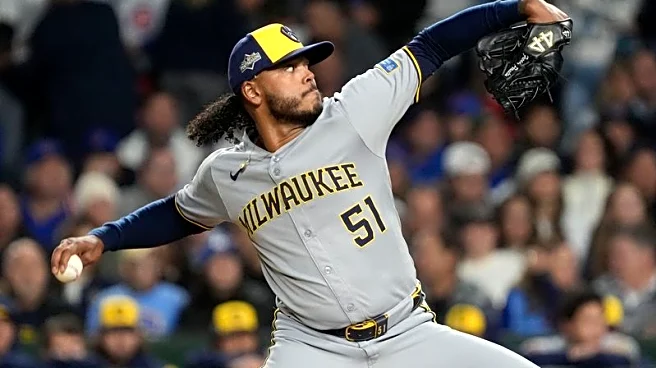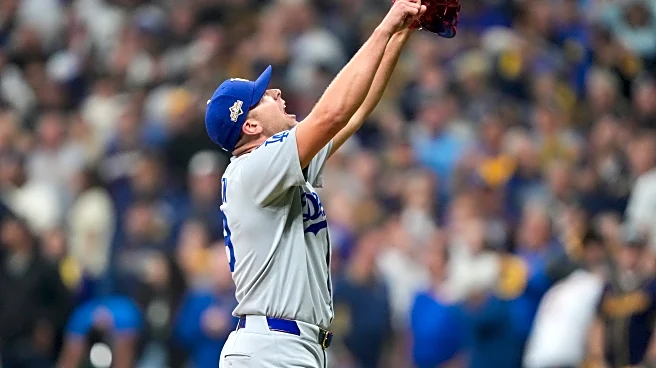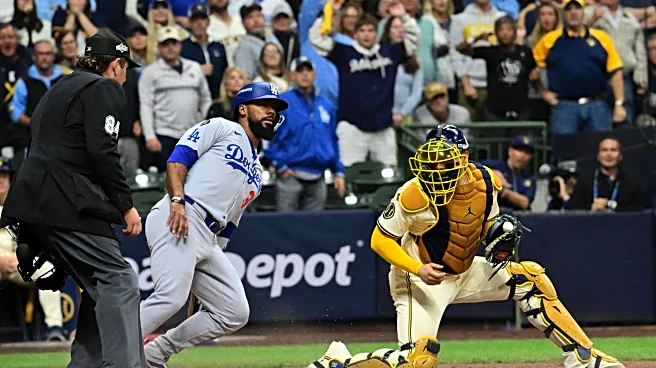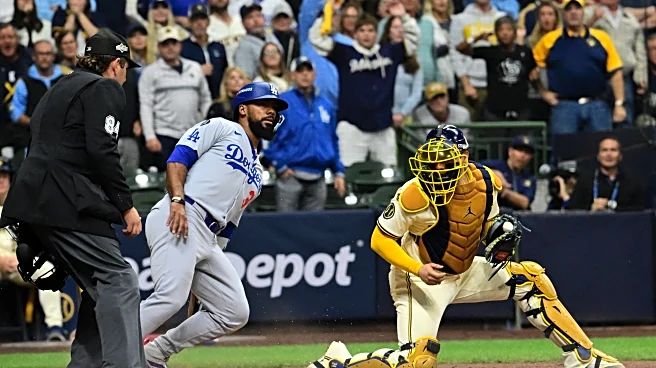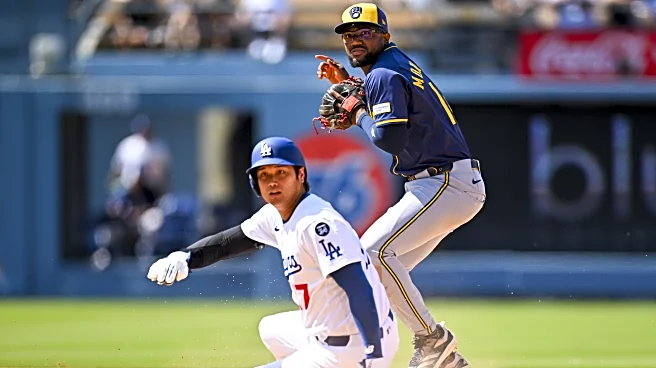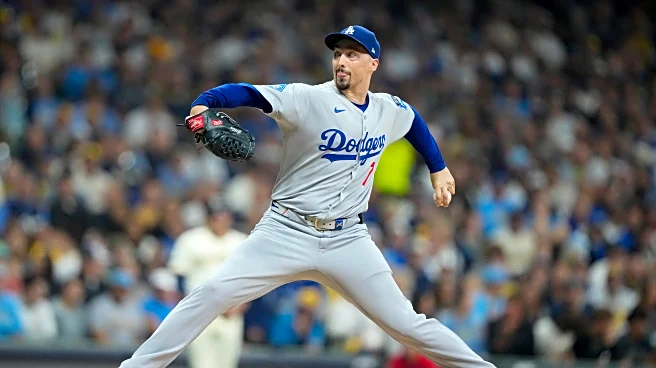What's Happening?
During Game 1 of the National League Championship Series (NLCS) against the Los Angeles Dodgers, Brewers second baseman Brice Turang faced a critical moment. With the bases loaded and two outs in the ninth inning, Dodgers closer Blake Treinen threw a pitch that nearly hit Turang. Instead of allowing the pitch to hit him, which would have tied the game, Turang dodged it. On the subsequent pitch, Turang swung at a high fastball and struck out, resulting in a 2-1 victory for the Dodgers. Post-game, Turang expressed regret, acknowledging that he should have leaned into the pitch to help his team. Brewers manager Pat Murphy defended Turang, explaining that avoiding a pitch is a natural reaction.
Why It's Important?
This incident highlights the intense pressure and split-second decision-making required in professional sports. Turang's choice not to let the pitch hit him has sparked debate about the strategic decisions athletes must make during critical moments. The outcome of this game has significant implications for the Brewers, as they now trail in the series. The decision also underscores the importance of mental and physical agility in baseball, where players must balance personal safety with team strategy. The Brewers' loss in Game 1 places them in a challenging position as they seek to advance in the NLCS.
What's Next?
The Brewers will aim to recover in Game 2 of the NLCS, with Freddy Peralta set to pitch against Yoshinobu Yamamoto of the Dodgers. The team will need to regroup and strategize effectively to overcome the Dodgers' lead in the series. Turang's experience may serve as a learning opportunity for him and his teammates, emphasizing the importance of quick decision-making under pressure. The Brewers' performance in the upcoming games will be crucial in determining their chances of advancing to the World Series.
Beyond the Headlines
The incident raises questions about the ethical considerations in sports, particularly regarding the balance between personal safety and team success. It also highlights the psychological aspects of sports, where athletes must manage stress and make rapid decisions that can impact their careers and team outcomes. This event may lead to discussions within the sports community about training athletes to handle high-pressure situations more effectively.




